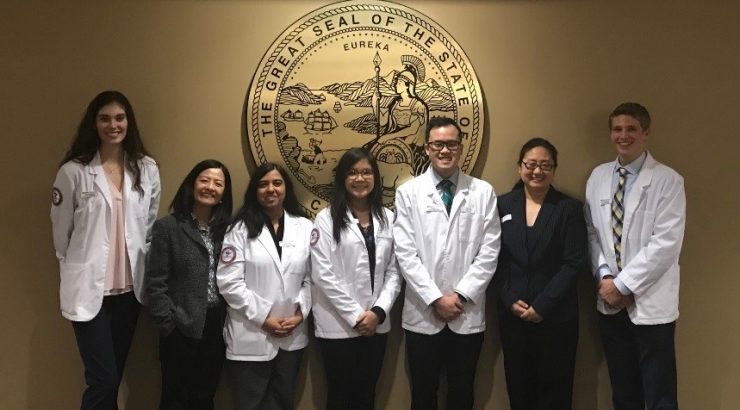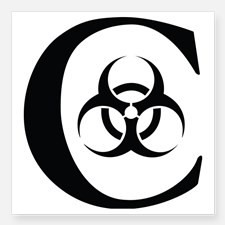
CUSP Student Pharmacist Advocacy Efforts to Promote Safe Handling of Oral Chemotherapy Agents
November 16, 2018
Chapman University student pharmacists and their capstone advisers Siu Fun Wong and Coco Yang, make a second visit to Sacramento to present to the California State Board of Pharmacy to propose to the California Board of Pharmacy Communication and Educational Committee the addition of a standardized “hazardous drug” symbol to the oral chemotherapy medication prescription label. The use of this proposed symbol for oral chemotherapy prescription labels may help consumers and patients.

It can help to:
- Promote easy identification of these drugs that require special handling by both professional and community partners who offer drug take-back programs
- Remind patients and caregivers the need for special handling and disposal of these medications, reducing the risks of cross contamination in the home environment and public domain.
- Serve as a reminder for pharmacists to provide specific counseling and education to patients and/or their caregivers.
With the increase utilization and drug development of oral chemotherapy and the lack of standardized guidelines, it was recognized that the practice of safe handling and disposal of oral chemotherapy is not consistent, and possibility not compliant with safety standards. Thus, unwanted contamination to patients’ homes and the environment may result. In an effort to address this serious public health issue, the student pharmacists at Chapman University School of Pharmacy (CUSP), under the mentorship of Drs. Siu Fun Wong and Coco Yang, have begun an advocacy initiative to assess the current knowledge and practice of handling and disposal of oral anticancer chemotherapy drugs by patients, caregivers, and providers through survey research. They have been working on this effort for a few years and four CUSP Capstone Team Student Pharmacists cohorts have been involved from the following classes: Class of 2018 (N = 4); Class of 2019 (N = 2); Class of 2020 (N = 3); and Class of 2021 (N = 3).
The team expects to identify potential barriers that cause gaps in knowledge, practice, and awareness of proper handling and disposal of oral chemotherapy medications. Upon completion of the study, the team hopes to propose a practical solution by formulating an educational and practice model involving all stakeholders.
To promote public safety, the team has submitted a letter to urge the California Board of Pharmacy to modify Title 16 CCR 1776-1776.6 to include hazardous drugs in the medication take-back programs. Recognizing the magnitude of investments in education and resources needed for the proposed modification, a cost effective and automated approach with collaborative effort from all stakeholders is warranted.
Team members have presented to the board of pharmacy committee three times to date, including the initial proposal introduction in March 2017, follow up presentation with survey data in July 2017 and October 2018. In addition, the team has submitted a review article to board of pharmacy publication, The Scripts, followed by a second submission by the faculty advisers on key educational items for providers when dispensing oral chemotherapy.
At this time, the board of pharmacy committee strongly encourages the team to continue gathering data while concurrently working to promote the inclusion of the standardized label by pharmacists in their daily practice when processing oral chemotherapy distribution. The team has also partnered with the California Society of Health-System Pharmacists and the California Pharmacists Association to raise awareness of the issue and to outreach to their members to gather provider survey data. The team plans to work with patient advocacy groups in the future.

